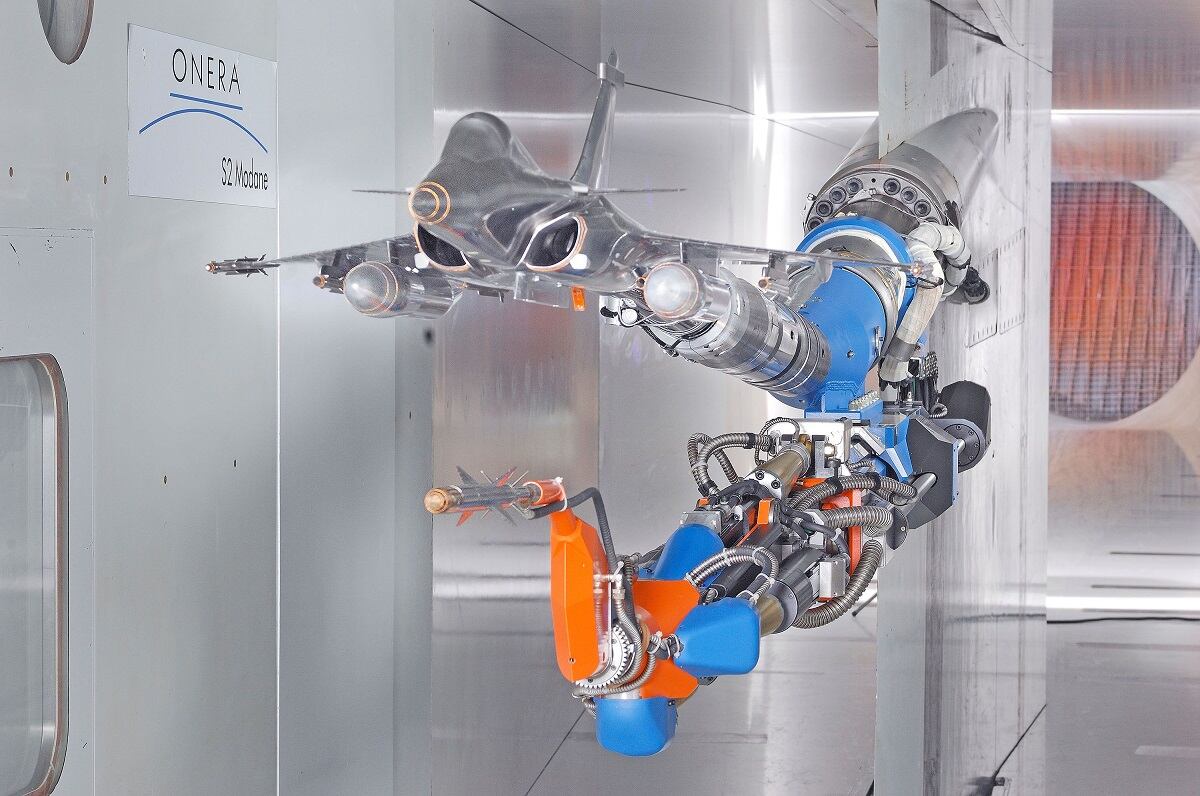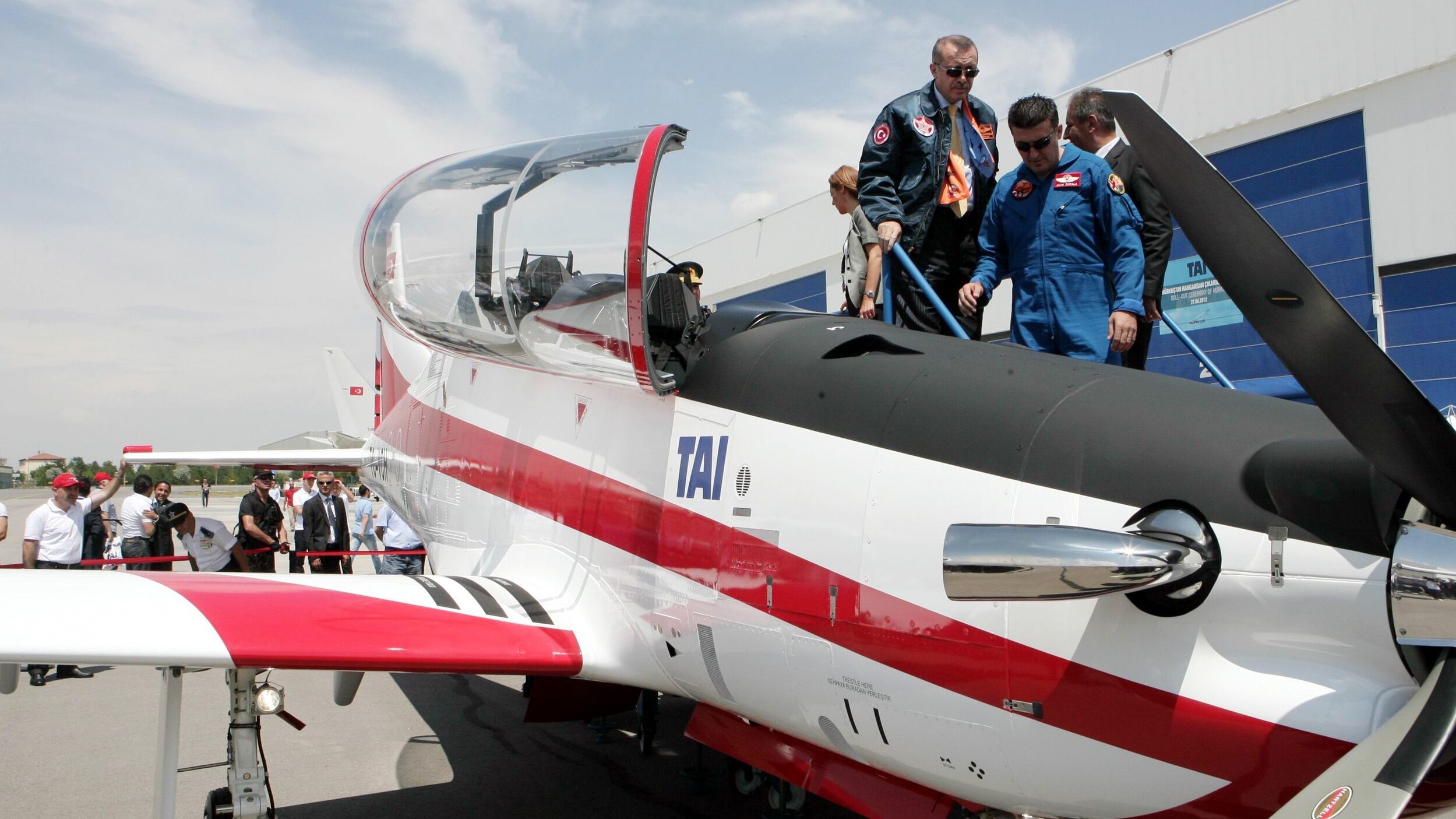BEIRUT — There is an increasing need for trainer jets in the Middle East as countries there work to expand their fighter fleets. The growing interest has been detected in the Gulf nations for trainers of both types: those used solely for training, and those able to perform close-air support missions.
The Hawk advanced jet trainer produced by BAE Systems is operated in Saudi Arabia, Oman, Bahrain, Kuwait and the United Arab Emirates. It is at the center of the growing appeal for trainers in the region. “We are looking at Middle East and Gulf markets with which we have an existing relationship, particularly in the Middle East, and those accessible markets who have, or will soon replenish, their front-line fleets with fourth- and fifth-generation fighters,” said Dean McCumiskey, the sales director with BAE Systems’ Air division.
Since the end of 2017, BAE Systems has delivered 18 Hawk AJTs to Saudi Arabia. The country initially signed for 22 trainers in 2012, but doubled the number when it ordered another 22 Hawks in 2015.
The Hawk Mk165 operated by the Royal Saudi Air Force has a new data link, an alternative radio system and an updated version of the Rolls-Royce Adour Mk951 engine.
RELATED

For its part, Qatar completed negotiations with BAE Systems to procure Hawk trainers, Defense News reported in November 2017.
“Saudi Arabia and Oman both operate Hawk in support of training their Eurofighter Typhoon pilots,” McCumiskey added. “Kuwait, Bahrain and the UAE also have Hawk as part of their training pipelines. Most recently Qatar has stated its intent to also acquire the aircraft to develop its training pipeline for Typhoon and other front-line jets.”
The sales director went on say the Hawk helps train pilots for “combat aircraft” such as the Eurofighter Typhoon, F-16, F/A-18 and F-35.
The Eurofighter Typhoon is in service in Saudi Arabia, Oman and the UAE. Those operating the F-16 Fighting Falcon include Egypt, Jordan, Morocco, Oman and Turkey. And Bahrain and the UAE have signed deals to reserve F-16 Block 60 fighters.
For its part, the F/A-18 has proven popular with Kuwait. The country signed a contract to acquire 40 F/A-18A and F/A-18F fighter jets, according to a January report in the Kuwaiti daily Al Raid.
Additionally, the UAE is reportedly working toward buying 24 F-35s, and Saudi Arabia is also reportedly interested.
“With several air forces expanding their front-line combat air capability, Hawk’s attributes and the associated enhanced training output will enable Gulf air forces to extract greater utilization from their combat aircraft,” McCumiskey said. “Production of Hawk continues in the U.K., with manufacturing operations in Brough, East Yorkshire, and Warton, and Samlesbury, Lancashire, with final assembly work also underway in the kingdom of Saudi Arabia.”
Emirati company Calidus manufactured the B-250, a trainer jet with light-attack capabilities. This local trainer was showcased for the first time at the 2017 Dubai Airshow.
“B-250 performs diverse missions like close-air support, surveillance, basic and advanced training,” Hamdan Al Shekili, a Calidus representative, said at the time. The company spokesperson pointed to the trainer as the first of its kind to be equipped with carbon fibers for flexibility and combat capabilities.
Turkey produces the Hurkus-C close-air support armed version of the original turboprop Hurkus trainer.
RELATED

Sudan-based company Safat shown off its turboprop Safat 03 trainer with an advanced avionics system at last year’s Dubai Airshow. The aircraft is light and meant for basic pilot training, glider tow and proficiency flight. It is a low-wing, metal aircraft with two seats. It boasts contemporary navigation and communication equipment. Safat also designed an advanced version, the Safat 04.
Jordan also has the facilities to produce trainer aircraft. According to a January 2004 report by Asharq Al-Awsat magazine, “Jordan Aerospace industries delivered SAMA 2000, a locally produced trainer jet, to the [Mideast] Aviation Academy within a contract to deliver eight total trainers.”
The T-50A trainer jet produced by Lockheed Martin, however, is not offered in the export market. “We are not currently offering the T-50A internationally, but are focused on meeting the needs of the U.S. Air Force customer in the current competition,” said Andy Winn, the company’s regional executive for the Middle East and Africa region.
Winn insisted there are no plans at the moment for a close-air support version of the T-50A, “however, our partner company, Korea Aerospace Industries, has a version of the T-50 they market that is a light fighter.”
The Saudi-led Arab coalition in Yemen makes use of member countries’ aircraft to perform airstrikes on targets. In these strikes, the operational costs of trainers with a close-air support role is 30 percent of the cost of operating a fighter aircraft.
For instance, the Archangel light-attack aircraft is one on which the UAE depends for airstrikes in Yemen, a source said, stressing the benefit of using armed, low-operational cost aircraft.
Aerospace and defense firm Leonardo is developing a fighter attack version of the M-346 to meet the growing and diversified operational requirements of air forces.
“The M-346FA’s characteristics make it not only an excellent advanced trainer, but also a light fighter aircraft capable of carrying out operational missions at far lower costs than those of front-line fighters,” boasted Lucio Valerio Cioffi, the managing director of Leonardo’s Aircraft Division.
Leonardo showcased its M-346 at the 2017 Dubai Airshow, and a number of regional countries showed interest.
“In Dubai, the fighter attack version of the M-346 was showcased, for which several air forces are already demonstrating their interest. It represents a further evolution of the M-346 able to answer to the different air forces’ requirements. Thanks to the integration of the Grifo multimode fire-control radar, designed and manufactured by Leonardo, already chosen by several customers in the world, the M-346FA will be provided with advanced operational capabilities,” Cioffi said.
As Middle Eastern countries procure new fighters, naturally pilots will need to be trained. Among the most notable examples that have chosen Leonardo’s training field is the UAE’s national aerobatic team, Al Fursan, which uses the Aermacchi MB-339 aircraft. The Emirati pilots were trained in Italy and the UAE under the supervision of the Frecce Tricolori pilots using Italian aircraft and training systems.
“The M-346 is a competitor global winner. It was selected by the UAE and ordered by Italy, Singapore, Poland and Israel. The new M-345 was already ordered by the Italian Air Force,” Cioffi said. “We believe that our trainers product portfolio can respond to the Gulf countries’ needs.”
To read more news on Middle East defense in Arabic, visit SDArabia.com.
Agnes Helou was a Middle East correspondent for Defense News. Her interests include missile defense, cybersecurity, the interoperability of weapons systems and strategic issues in the Middle East and Gulf region.







